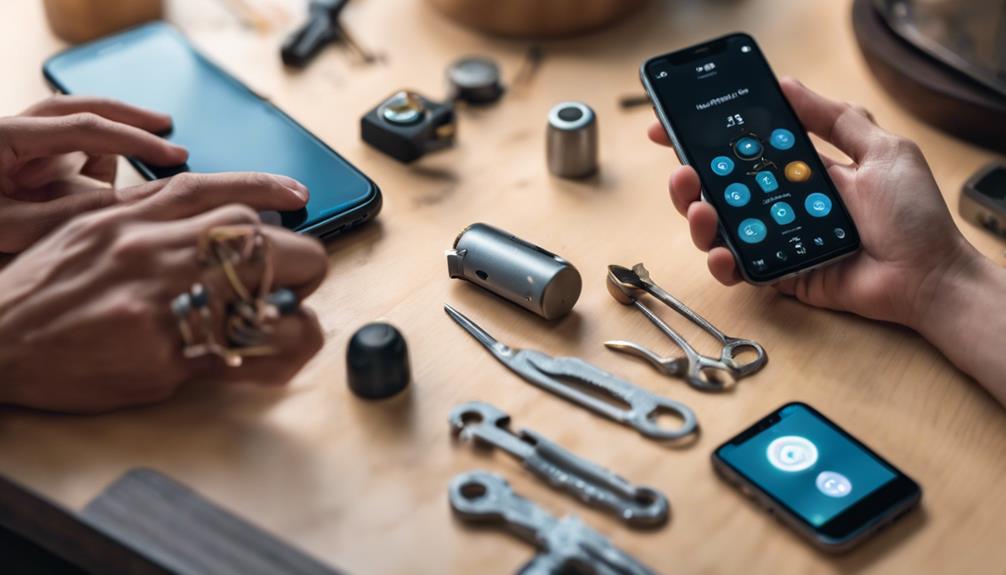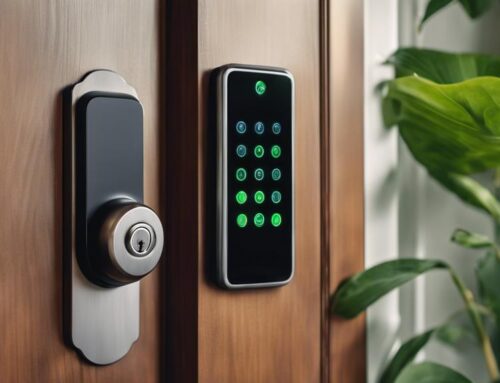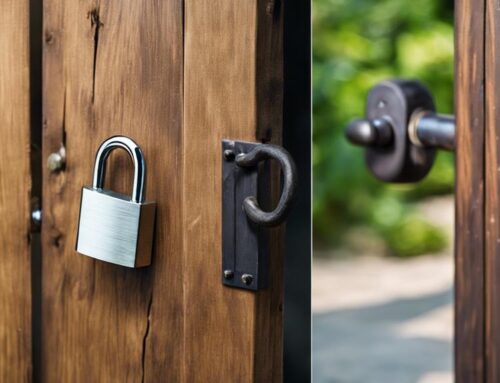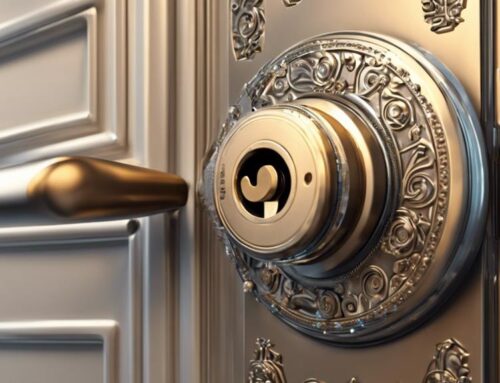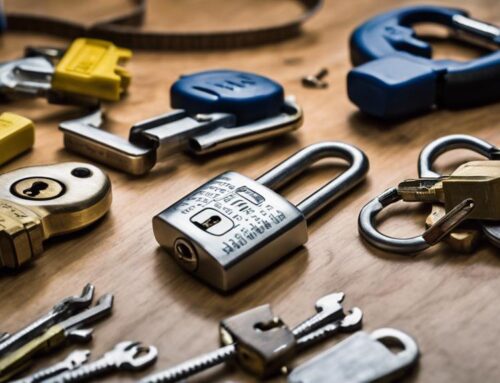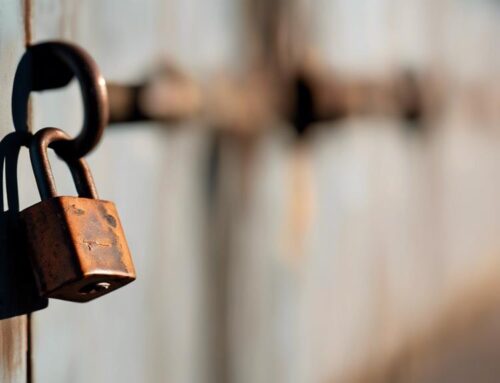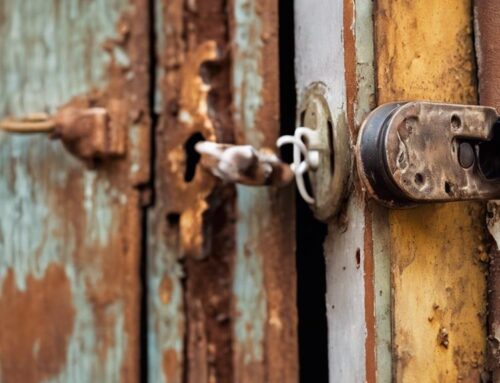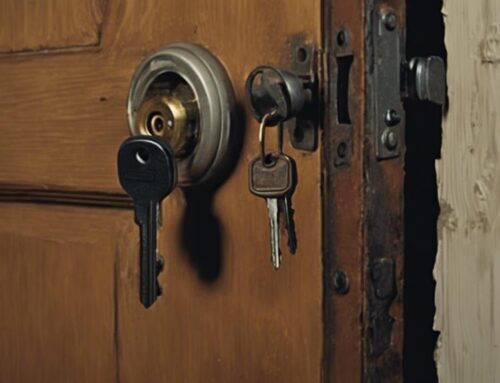Re-keying your smart locks is a simple way to boost your security. First, gather tools like a screwdriver, tension wrench, compatible key blanks, and a rekeying tool. Remove the lock from the door, following the manufacturer's instructions. Insert the rekeying tool and turn it until you hear a click. Next, insert the new key while pressing the tool and gently rotating it. Test the key to make sure it works smoothly; repeat if necessary. Remember to check compatibility with your lock model for best results. There's much more to know about optimizing your smart lock security!
Key Takeaways
- Gather necessary tools, including a screwdriver, tension wrench, compatible key blanks, pinning kit, and rekeying tool before starting the process.
- Follow the manufacturer's instructions to safely remove the smart lock from the door.
- Insert the rekeying tool into the lock and turn until you hear a click to prepare for the new key.
- Gently insert the new key and rotate while pressing the rekeying tool to complete the rekeying process.
- Test the new key for smooth operation and ensure it meets compatibility requirements as per manufacturer guidelines.
Understanding Smart Locks
Smart locks are revolutionizing the way we secure our homes, offering a blend of convenience and technology. By understanding smart locks, you can enhance your home security while making it easier for yourself and those you serve.
These locks allow you to control access through your smartphone, giving you the flexibility to grant entry to family, friends, or service providers without needing a physical key. For instance, you may find that some smart lock models offer features that allow for re-keying options that simplify the changing of access permissions.
When you're considering how to rekey smart lock options, it's important to know that most smart locks come with user-friendly features. Many models enable you to change access codes or manage digital keys through an app, making this process straightforward. This means you can guarantee that only trusted individuals have access to your home, adding an extra layer of safety.
As you explore smart locks, focus on their ability to simplify your life and the lives of others. Understanding smart locks not only helps you serve your own needs but also empowers you to create a secure environment for those around you.
The technology behind these locks is designed with user-friendly interfaces, making sure everyone can enjoy the benefits of modern security solutions.
Tools Required for Rekeying
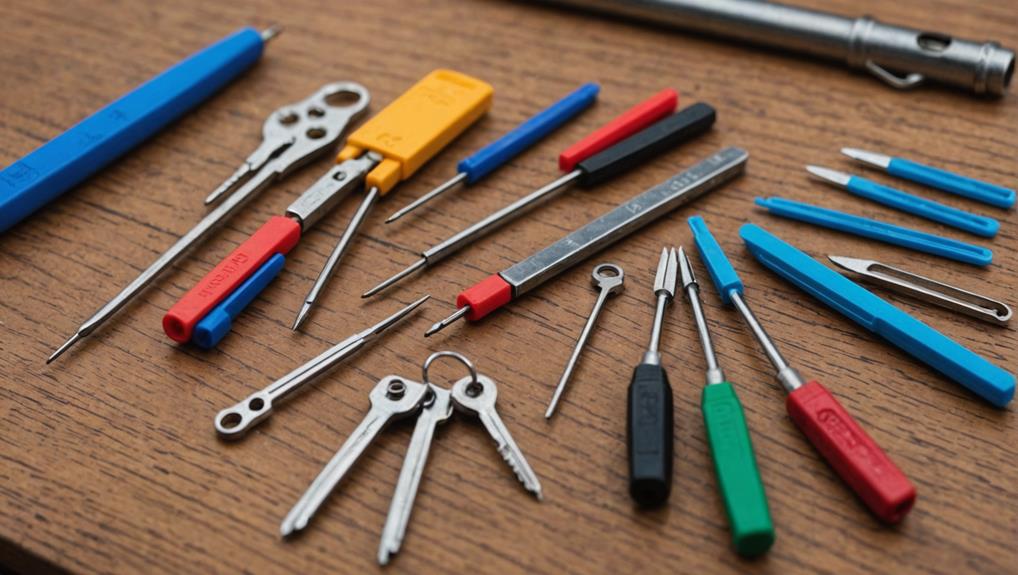
To successfully rekey a smart lock, you'll need a few essential tools at your disposal. Having the right equipment guarantees that the process goes smoothly and helps you serve others by enhancing their security.
For a thorough overview of the necessary tools, check out essential tools for DIY and pro lock re-keying.
Here's a quick list of what you'll need for your smart lock rekeying guide:
- Screwdriver: A Phillips or flat-head screwdriver will help you remove the lock from the door.
- Tension wrench: This tool is vital for applying the necessary tension to the lock while rekeying.
- Compatible key blanks: Make sure you have the appropriate key blanks for your smart lock model.
- Pinning kit: If your smart lock uses pins, a pinning kit will allow you to adjust the internal components.
Step-by-Step Rekeying Process
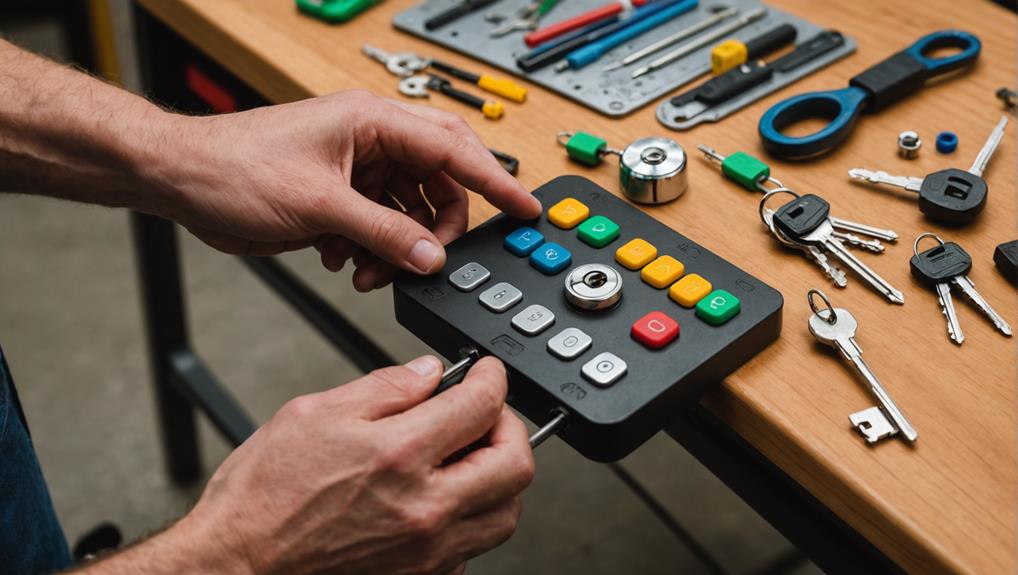
Starting the rekeying process for your smart lock can seem intimidating, but with the right steps, it's quite manageable. First, confirm you've gathered all necessary tools and have your new keys ready.
If you're considering a DIY approach, it's important to weigh your options, as DIY vs. Professional Re-Keying can greatly impact your experience.
Begin by removing the smart lock from your door, following the manufacturer's instructions carefully. Once it's detached, locate the rekeying tool that came with your lock.
Insert the rekeying tool into the lock and turn it until you hear a click, indicating it's in the right position. Next, take your new key and insert it fully into the lock.
Rotate the key gently while pressing the rekeying tool, allowing the lock to adjust to the new key's shape. After a few moments, you should feel the mechanism release.
Now, remove the key and the rekeying tool. Test the new key in the lock to confirm it turns smoothly. If it doesn't, repeat the process.
Compatibility Considerations
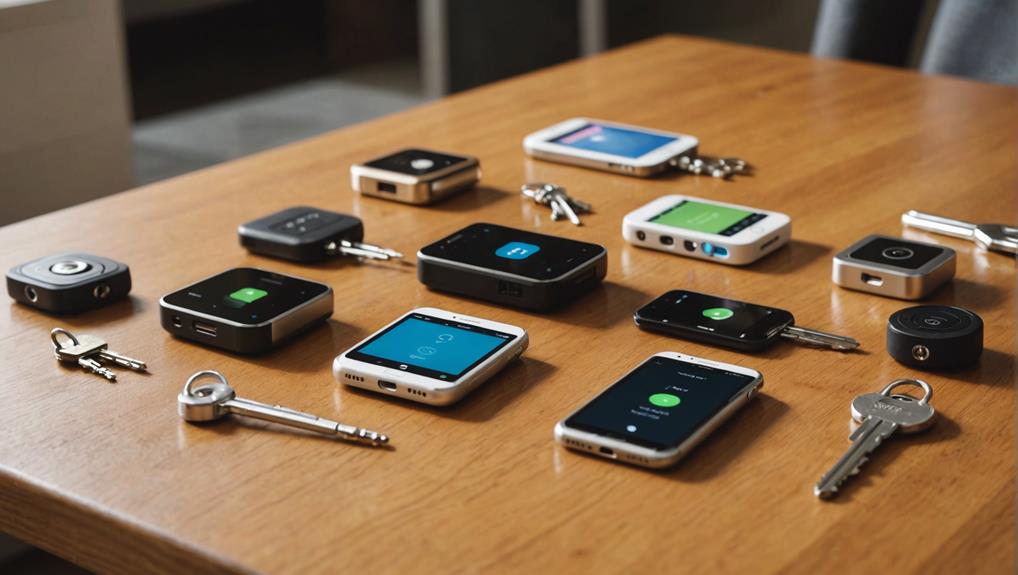
When rekeying your lock, compatibility is crucial to guarantee the new key functions correctly. Confirming smart lock compatibility is essential to avoid frustration and maintain security, especially considering the pros and cons of smart locks.
Here are some considerations to keep in mind:
- Key Type: Verify that the new key matches the smart lock's specifications.
- Manufacturer Guidelines: Refer to the manufacturer's instructions for any particular compatibility notes.
- Model Variations: Different models within the same brand may have unique requirements, so double-check before proceeding.
- Software Updates: Make sure your smart lock's firmware is up-to-date for ideal performance with the new key.
Enhancing Security After Rekeying
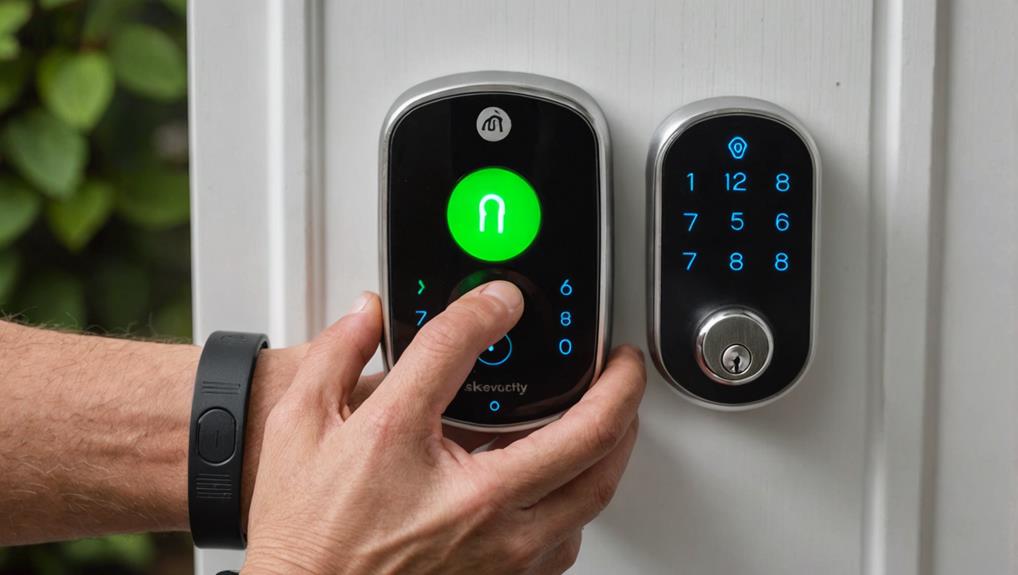
Although rekeying your smart lock is a significant step in maintaining security, it's equally important to take additional measures to enhance that security afterward. Start by reviewing your current security protocols, especially in shared spaces where access might need to be restricted to prevent unauthorized entry.
Consider enabling two-factor authentication if your smart lock supports it. This adds an extra layer of protection, ensuring that only authorized individuals can access your home. Additionally, enhancing security in shared spaces can help mitigate risks associated with multiple users.
Next, regularly update your passwords and passcodes. Using unique combinations makes it difficult for unauthorized users to gain access. After rekeying electronic locks, it's also wise to monitor access logs if your lock provides this feature. This way, you can keep track of who enters and exits your home.
Don't forget about physical security as well. Inspect your door and frame for vulnerabilities. Reinforcing your door with a smart strike plate can deter break-ins.
Frequently Asked Questions
Can I Rekey a Smart Lock Myself Without Professional Help?
Absolutely, you can rekey a smart lock yourself without needing professional help!
Many models come with user-friendly instructions, making the process straightforward. Just make sure you've got the right tools and follow the steps carefully.
If you run into any trouble, online tutorials can guide you through. It's a great way to save money and feel accomplished, knowing you've taken control of your home's security.
Just stay patient and focused!
How Often Should I Rekey My Smart Lock?
They say, "A stitch in time saves nine."
You should rekey your smart lock whenever there's a change in your household, like moving in or out, or if you've lost a key.
It's also wise to do it annually as a security measure.
Keeping your home secure is essential, so don't hesitate to take action.
Regularly assess your lock's security to guarantee you're protecting your loved ones and belongings effectively.
Are All Smart Locks Rekeyable?
Not all smart locks are rekeyable. While some models allow you to change the access codes or digital keys easily, others don't support this feature.
If you're considering a smart lock, check the manufacturer's specifications to verify it meets your needs. You want a lock that provides security and flexibility.
Always choose a smart lock that fits your lifestyle and offers the convenience you're looking for in home security.
What if I Lose My Smart Lock Key?
If you lose your smart lock key, don't panic!
Most smart locks have built-in features that allow you to regain access. First, check if you can use a backup code or a mobile app to open it.
If that doesn't work, you might need to reset the lock to factory settings, which usually requires a master code.
Always keep backup options handy to guarantee you're prepared for any situation!
Do Smart Locks Require Batteries for Rekeying?
Think of smart locks like a smartphone; they need power to function properly.
Yes, smart locks do require batteries, especially when you're rekeying them. Without a charged battery, the lock can't perform its secure operations.
It's crucial to check the battery level before attempting any adjustments. By ensuring the batteries are fresh, you're not just enhancing your security; you're also serving the needs of those who rely on your space for safety.
Conclusion
Rekeying your smart locks can feel as effortless as turning a key in a lock. By following the right steps and using the necessary tools, you can enhance your home's security with ease. Remember to check compatibility and consider upgrading your security measures afterward. With a little effort, you'll guarantee your home remains a safe haven, giving you peace of mind just like a fortress guarding against unwanted intruders. Stay proactive and keep your space secure!

